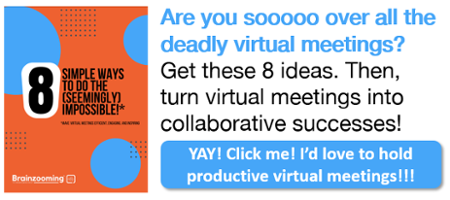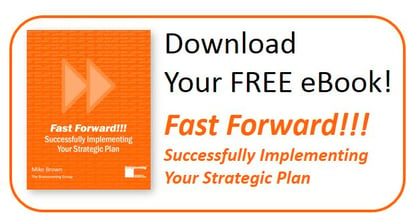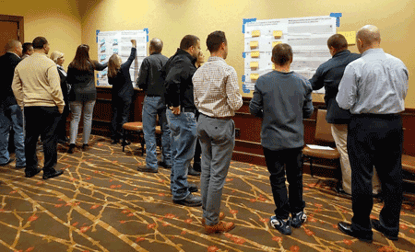What will work look like in 2021 and beyond? There is a lot of speculation about the answer to hybrid work, but several are clear that leaders must consider:
- Work will look different than it did pre-pandemic
- Hybrid situations involving in-person and virtual employees and activities will expand dramatically
- Leaders must start planning and acting early to implement workplace changes
As Kevin McCarty, CEO of West Monroe, spells out in a story about workplace changes in The Wall Street Journal, the transition to hybrid work will “‘redefine expectations, rules, (and) permissions” in the workplace.
The article highlights how companies, including Prudential Financial and Expedia Group, are contending with new challenges. Peter Kern, Expedia CEO, identifies multiple issues, including how hybrid work and meetings disadvantage remote employees. In-person and virtual meetings present distinct challenges. Combining the two formats creates additional friction in fostering fully engaged participation and collaboration.
 Photos via Unsplash and LinkedIn Sales Solutions and Andrew Neel
Photos via Unsplash and LinkedIn Sales Solutions and Andrew Neel
1) Gauging Changing Expectations for Hybrid Work
Gauging expectations and aspiration for future work is a first step in developing a hybrid work strategy. Start with asking questions of multiple audiences.
Start with identifying your employees’ expectations about the transition to hybrid work. Realize that their perspectives will likely change multiple times. Employees who have been homebound since the pandemic’s start will experience waves of feelings, emotions, and interactions when they re-emerge.
Our recommendation for gauging expectations? Use anonymous outreach to ask open-ended questions about current employee thinking. Probe for:
- Their perceptions about productivity, engagement, and collaboration during the pandemic
- How support was extended during the transition for different work settings, including new flexibility and permissions
- Self-perceptions of productivity and performance enablers during the pandemic
- Future work expectations and aspirations
For leadership team members, ask questions ask additional questions about:
- Perceptions of team engagement, productivity, and results during the pandemic
- Which permissions they extended departmentally that were most impactful
- Their organizational work setting and style expectations and aspirations
Answers to the leadership questions will suggest themes for shaping your organization’s hybrid work strategy.
2) Creating Productive Rules
Rules and agreed-to engagement practices are vital when framing productive engagement and collaboration for everyone in a hybrid workplace.
First, inventory significant workplace rules and practices that changed or that the organization suspended during the pandemic. Actively challenge reinstating rules that the organization made more flexible during the pandemic. With more hybrid work ahead, it’s essential to maintain the flexibility to accommodate everyone.
With hybrid meetings, we recommend establishing practices to actively avoid the disadvantages to participating remotely highlighted by the Expedia CEO. From a talk with Brian Tarallo (the Surviving the Horror of Online Meetings author), we identified a few areas that hybrid interaction rules should address:
- The situations when input platforms need to be the same for in-person and virtual participants to equalize the ability to contribute ideas and input
- Recommended rooms and meeting configurations to accommodate hybrid collaboration
- Guidelines for using full and small group activities
- Determining the use of in-person meeting surrogates to represent remote participants
- Actively managing the schedule and how offline conversations should or should not happen during breaks
Obviously, rules must be flexible to accommodate changes and learnings as hybrid work situations emerge. The key is trying new practices to maximize engagement for everyone.
3) Protecting Newfound Permissions
Don’t allow pandemic-inspired employee flexibility to evaporate. Make sure to:
- Avoid revoking flexibility and permissions that served your organization and employees when work went remote.
- Revisit themes from the employee and executive outreaches for practices that need to continue to exist.
- Explore where new permissions and flexibility emerged within the pandemic to support greater productivity and successful results.
- During the early stages of hybrid work’s expansion, actively advocate for greater flexibility that lets employees make smart decisions.
Overall, set clear productivity and results objectives, then leave permissions in place so employees can freely identify innovative ways to co-create your successful hybrid work environment.
The Critical Success Factor for Hybrid Work Success
In contrast to the either-or mentality of many businesses, hybrid work settings demand a this-and-that mind set.
That’s a critical (and potentially challenging) shift for many organizations. That’s why you will need to understand everyone’s hybrid workplace expectations. Then you can productively shape rules and permissions for success.
If you want to think through ideas for how you can make this transition, just contact me, and let’s grab thirty minutes to share ideas – no strings attached. – Mike Brown




